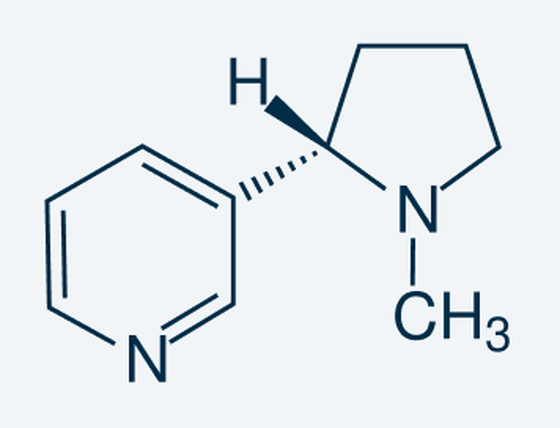A Guide to Nicotine in Smoke-Free Alternatives
Where Does Nicotine Come From?
Nicotine is a chemical found in the tobacco plant, a member of the “nightshade” family of plants. This family of plants includes common household fruit and vegetables such as tomatoes, potatoes, and peppers. While levels of nicotine are present in these foods, they contain far lower levels of nicotine than found in nicotine developed products. To understand the structure and properties of nicotine, we can view the nicotine chemical formula.
Nicotine is present in tobacco products, such as cigarettes and heated tobacco. The diagram shows the chemical formula for nicotine. In its purest state, nicotine is an odourless liquid – it is also what’s known as a liquid alkaloid, which changes with exposure to the atmosphere and light.
Freebase Nicotine
Nicotine is a chemical found in the tobacco plant, a member of the “nightshade” family of plants. This family of plants includes common household fruit and vegetables such as tomatoes, potatoes, and peppers. While levels of nicotine are present in these foods, they contain far lower levels of nicotine than found in nicotine developed products. To understand the structure and properties of nicotine, we can view the nicotine chemical formula.
Nicotine is present in tobacco products, such as cigarettes and heated tobacco. The diagram shows the chemical formula for nicotine. In its purest state, nicotine is an odourless liquid – it is also what’s known as a liquid alkaloid, which changes with exposure to the atmosphere and light.

Nicotine in Smoke-Free Alternatives
Nicotine is generally present in some smoke-free alternatives to cigarettes. While addictive and certainly not risk-free, as aforementioned, nicotine is not the most harmful factor in a cigarette.
With this information, an adult smoker might be interested in switching from cigarettes to a smoke-free alternative. Heated tobacco products are one type of smoke-free alternative. These products should heat tobacco instead of burning it. Much like in cigarettes, tobacco heating systems provide nicotine but generally, without combustion and many of the harmful chemicals produced during this burning process. Of course, this should be substantiated on a product-by-product basis.
Alternatively, vapes provide a different option for adult smokers. Vapes, or e-cigarettes as they are also known, typically make use of an e-liquid which, when vapourised, deliver a vapour instead of smoke. This means there is usually no combustion. Of course, the absence of combustion should be substantiated on a product-by-product basis. Adult smokers can choose from various different flavours depending on the brand. Nicotine can often be found within the e-liquid - it is one of the common ingredients, alongside Vegetable Glycerine and Propylene Glycol, and flavourings.
This article is for general information and educational purposes. Some of the information in this article is based on external, third-party sources and we make no representations or warranties of any kind regarding the accuracy, validity or completeness of such information.

